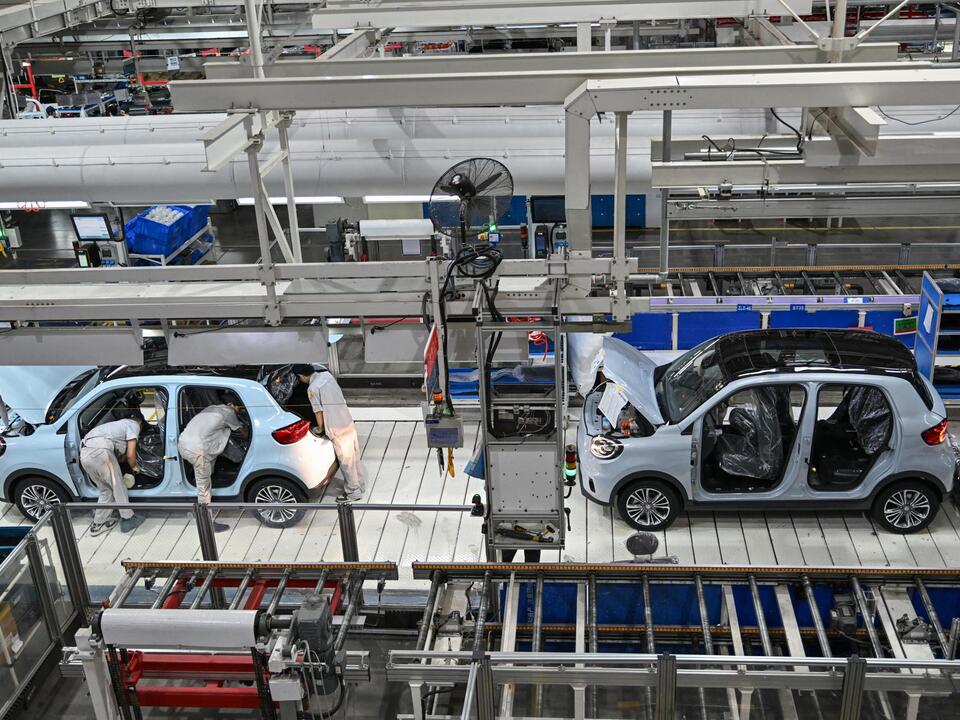Physical Address
304 North Cardinal St.
Dorchester Center, MA 02124
Physical Address
304 North Cardinal St.
Dorchester Center, MA 02124

The gap between the United States and China in the electric vehicle (EV) market has grown increasingly pronounced over the past 15 years. While the U.S. has hesitated, China has built an impressive electric vehicle ecosystem, characterized by a vast public charging network and a wide array of affordable vehicle options. This momentum has positioned China as a formidable player in the global EV arena, leaving the U.S. in a difficult position as it attempts to catch up.
According to Lei Xing, a Chinese automotive expert, “They’re taking over the world, except North America.” This sentiment underscores how China has significantly accelerated its transition to electric vehicles at a pace that is unmatched globally. By leveraging government subsidies, incentives, and a robust manufacturing strategy, China now houses over 10 million charging stations. The success of the electric vehicle initiative demonstrates what Xing refers to as “China Speed,” highlighting the rapid development that has characterized the Chinese automotive sector.
Recent statistics from July and August 2024 indicate that over half of automotive sales in China were electric or hybrid vehicles. In stark contrast, the U.S. is grappling with its own aspirations. The Biden administration has made it a priority to ensure that by 2030, half of all vehicles sold in the country will be electric, plug-in hybrids, or fuel cell vehicles. However, achieving this ambitious goal faces numerous hurdles, including limited supply chain access, slow infrastructure development, and a lingering cultural attachment to gasoline-powered vehicles.
John Bozzella, CEO of the Alliance for Automotive Innovation, described the administration’s objectives as the “ragged edge of achievable.” This skepticism reflects growing concern over whether these targets can realistically be met. The Biden administration has committed to constructing 500,000 charging stations nationwide by 2030, deploying $7.5 billion in funding to support this effort. Yet, as of late August 2023, only 192,500 public chargers were operational, a figure that doubled since the onset of the current administration.
Despite the strides made under President Biden, the slow rate of infrastructure development stifles EV adoption in the U.S. Many potential buyers are deterred by “range anxiety,” a concern stemming from a lack of charging stations. In June, battery electric and plug-in vehicles together accounted for less than 10% of car sales in the country.
Baratunde Cola, CEO of Carbice, emphasized that “China has a head start in a race that is still at the starting line.” In contrast, most key players in the U.S. are still laying groundwork as China surges ahead.
This dominance isn’t just a recent development; it’s the result of over a decade of strategic policy-making. Recognizing the potential of electric vehicles as a transformative technology, the Chinese government has invested extensively in their development. The initiative began in 2009 with a subsidy pilot program named “Ten Cities and Thousand Vehicles,” aimed at subsidizing electric vehicles in public transport, such as buses and taxis. By 2013, subsidies were extended to individual consumers, creating a tiered system based on vehicle range and efficiency.
However, the financial support was halted in 2022, by which point China had already solidified its status as a leader in electric vehicles. With substantial overall subsidies amounting to $231 billion from 2009 to 2023, the Chinese government had a significant impact on consumer adoption. New electric vehicle registrations saw 8.1 million in 2023, noting an impressive 35% growth compared to 2022.
An extensive network of chargers further fuels China’s rise. By June 2023, there were approximately 10.2 million chargers available across the country, a considerable increase from previous years. China’s centralized charging system also offers compatibility with various vehicle types, removing barriers seen in the U.S. where multiple plug types create confusion.
Furthermore, China’s access to critical materials essential for battery manufacturing presents another advantage over the U.S. The International Energy Agency forecasts that by 2030, China will supply 90% of graphite and 77% of refined rare earths essential for electric vehicles. Currently, the U.S. relies entirely on imports for graphite, with a significant portion sourced from China.
Despite these challenges, experts remain optimistic about the U.S. catching up. Citing the nation’s technical capabilities and resources, they believe there is still potential for the U.S. to improve electric vehicle infrastructure and production systems. However, transitioning quickly in this sector will require strong political will and strategic planning.
The Biden administration has already adjusted projections for EV sales to meet half the market by 2030, a move designed to create a more achievable goal amid the intricacies of supply chain bottlenecks. Establishing robust incentives and addressing logistical challenges for manufacturers could foster a more competitive landscape for U.S. auto builders.
As the country endeavors to forge ahead in the EV landscape, the need for a greater workforce focusing on clean energy development stands out. Current federal initiatives are working toward deploying more than 24,100 EV chargers, suggesting that thousands will be operational in the near future.
With increased investments in technology and infrastructure, the U.S. has the opportunity to transform its electric vehicle market and eventually, redefine its automotive legacy in the global arena.
Source: CBS News



